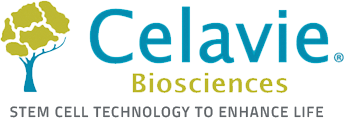Multicenter Open Label Study Investigates Treatment of Equine Tendon Injuries with Novel Stem Cells
Regenerative medicine start-up studies over 400 horses with tendon and ligament injuries
OXNARD, Calif., December 15, 2013—Veterinary regenerative medicine start-up Celavet Inc., a subsidiary of Celavie Biosciences LLC, successfully completed a multicenter, open label study investigating the treatment of equine tendon and ligament injuries with Celavet’s OK100 stem cells on more than 400 horses.
In 35 veterinarian centers throughout the US, the study sought to accumulate safety, efficacy, and dosing data for Celavet’s OK100 equine stem cells. The multicenter, open label study included more than 400 horses with tendon and ligament injuries, with 275 cases followed for longer than one year and 113 cases followed for three years post-treatment.
This study did not reveal any significant long-term safety concerns associated with intra-lesional injections of OK100. Over 100 horses followed for three years post treatment showed no signs of tumors. There was some pain and swelling at the site of injection in 13.5% of cases, which resolved within days. Two horses that received distal perfusion injections experienced transient anaphylactic reactions from which they recovered fully. No malignancies have been reported in any of the animals.
Celavet addressed the measure of efficacy for musculoskeletal injury by grading lameness, exercise level, pain, and swelling prior to injection and 90-120 days post injection. Participating veterinarians also performed a range of ultrasound measurements to observe structural changes to the lesions. The echogenicity score reflects the degree to which legion has filled in. Fiber alignment allows differentiation between scar tissue with its disorganized fiber pattern and healthy connective tissue with parallel fiber arrangement. Although the study was not controlled, it still allowed a preliminary look at efficacy.
The ultimate measure of efficacy for a treatment of a musculoskeletal injury is the level of functional improvement. Clinically, the horses demonstrated a return-to-normal function. Ultrasound examination demonstrated anatomically correct fiber alignment, as well as absence of scar tissue.
Animals designated as “chronic” had undergone other treatments and failed to improve prior to the OK100 injections. Unlike the acute group, the baseline scores of the chronic animals can be viewed as the controls for the day 90-120 scores, due to their prior failure to improve.
“Our equine research is grounded in enabling horses to regain their fullest potential as competitors, performers, workers, or companions,” said CEO and President Sandy Solmon. “We observed statistically significant improvement compared to baseline values in most efficacy end measures. The echogenicity and fiber alignment scores were especially telling, as improvement in these parameters suggests reconstruction of tendon and ligament tissue that is not achievable with simple scar formation.”
Celavie and Celavet use the latest technological breakthroughs to produce large banks of undifferentiated stem cells with uniform qualities utilizing closed-system bioreactors. The cells are grown in a specialized patented medium that allows them to maintain their sterility and genetic stability over the course of the manufacturing process. Celavet uses the same standardized and controlled production methods to establish equine, canine, and feline stem cell lines as those used by Celavie in the manufacture of human cells. Stem cell lines from different species all express standard stem cell characteristics and are available to address pathologies in their respective species.
###



